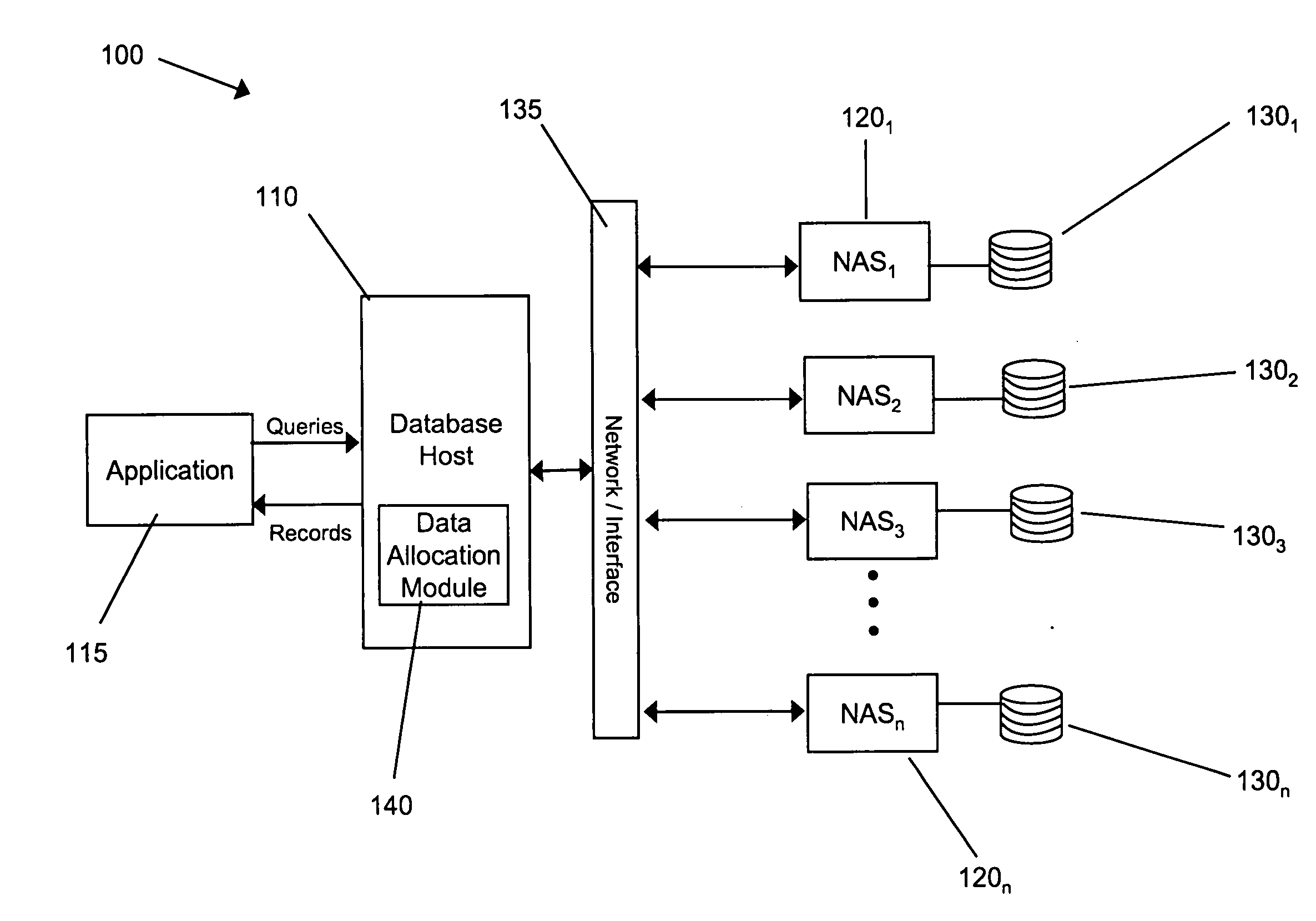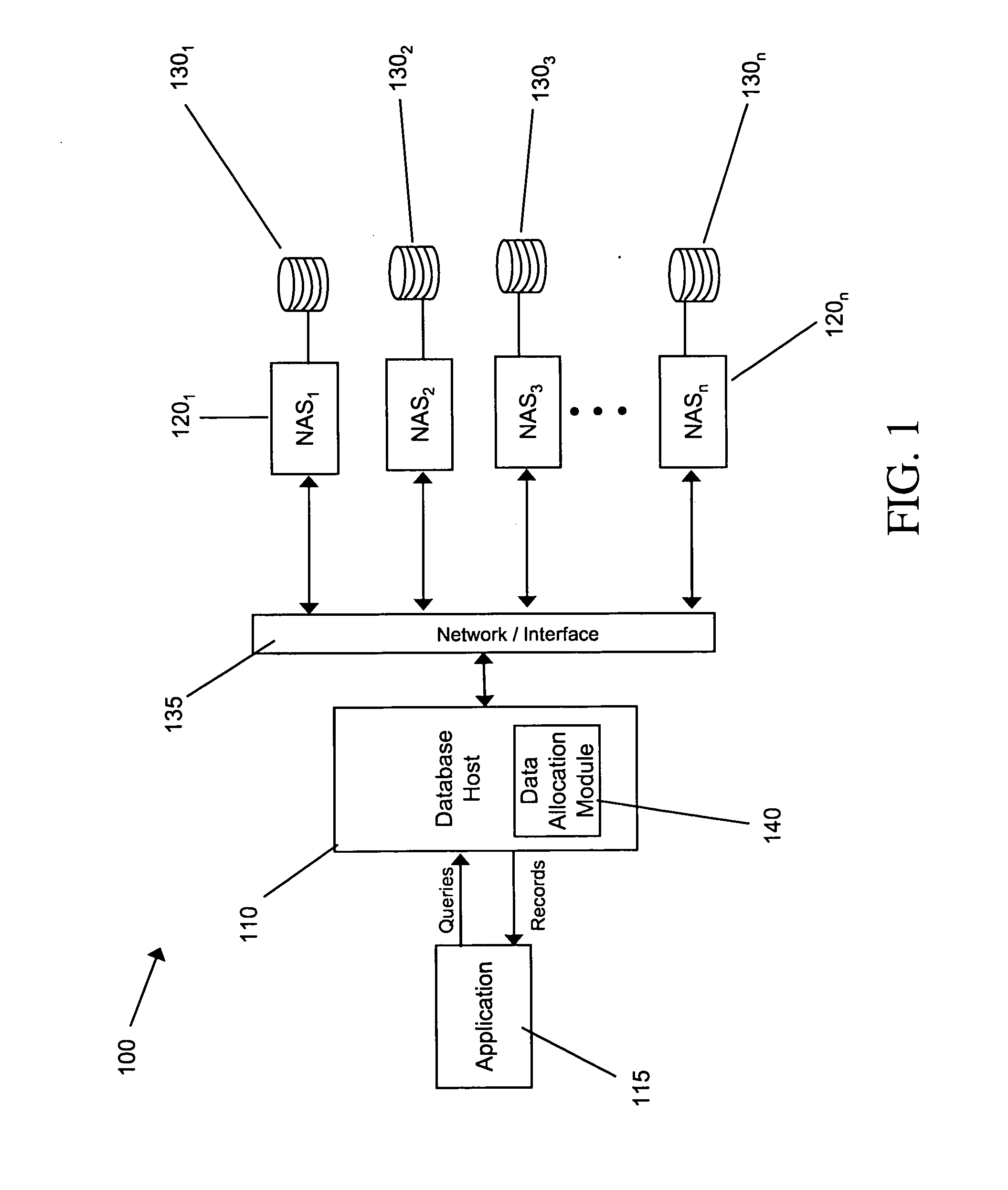Allocation and redistribution of data among storage devices
a technology for storage devices and data, applied in the field of management of records, can solve the problems of affecting the distribution of existing records, affecting the distribution of data records, and affecting the performance of devices, etc., and achieve the effect of facilitating the distribution and reallocation of data records
- Summary
- Abstract
- Description
- Claims
- Application Information
AI Technical Summary
Benefits of technology
Problems solved by technology
Method used
Image
Examples
Embodiment Construction
[0027]The present invention provides techniques and systems for allocating records to and distributing records among a changing set of storage devices by grouping the records based on the starting and ending numbers of storage devices. In one embodiment, an allocation table is defined that directs the initial grouping and subsequent regrouping of records among storage devices as the number of storage devices changes. The table includes a series of rows each corresponding to an actual storage device or one that may possibly enter the system; that is, the number of rows corresponds to the maximum number of devices that may be present in the system. For example, if the number of devices can vary from 1 to 4, the table will include four rows, one for each possible arrangement (one device, two devices, three devices, and four devices). In some instances (e.g., disk failure, power loss, catastrophic failure, etc.), the number of devices as used herein may refer to “active devices” availab...
PUM
 Login to View More
Login to View More Abstract
Description
Claims
Application Information
 Login to View More
Login to View More - R&D
- Intellectual Property
- Life Sciences
- Materials
- Tech Scout
- Unparalleled Data Quality
- Higher Quality Content
- 60% Fewer Hallucinations
Browse by: Latest US Patents, China's latest patents, Technical Efficacy Thesaurus, Application Domain, Technology Topic, Popular Technical Reports.
© 2025 PatSnap. All rights reserved.Legal|Privacy policy|Modern Slavery Act Transparency Statement|Sitemap|About US| Contact US: help@patsnap.com



